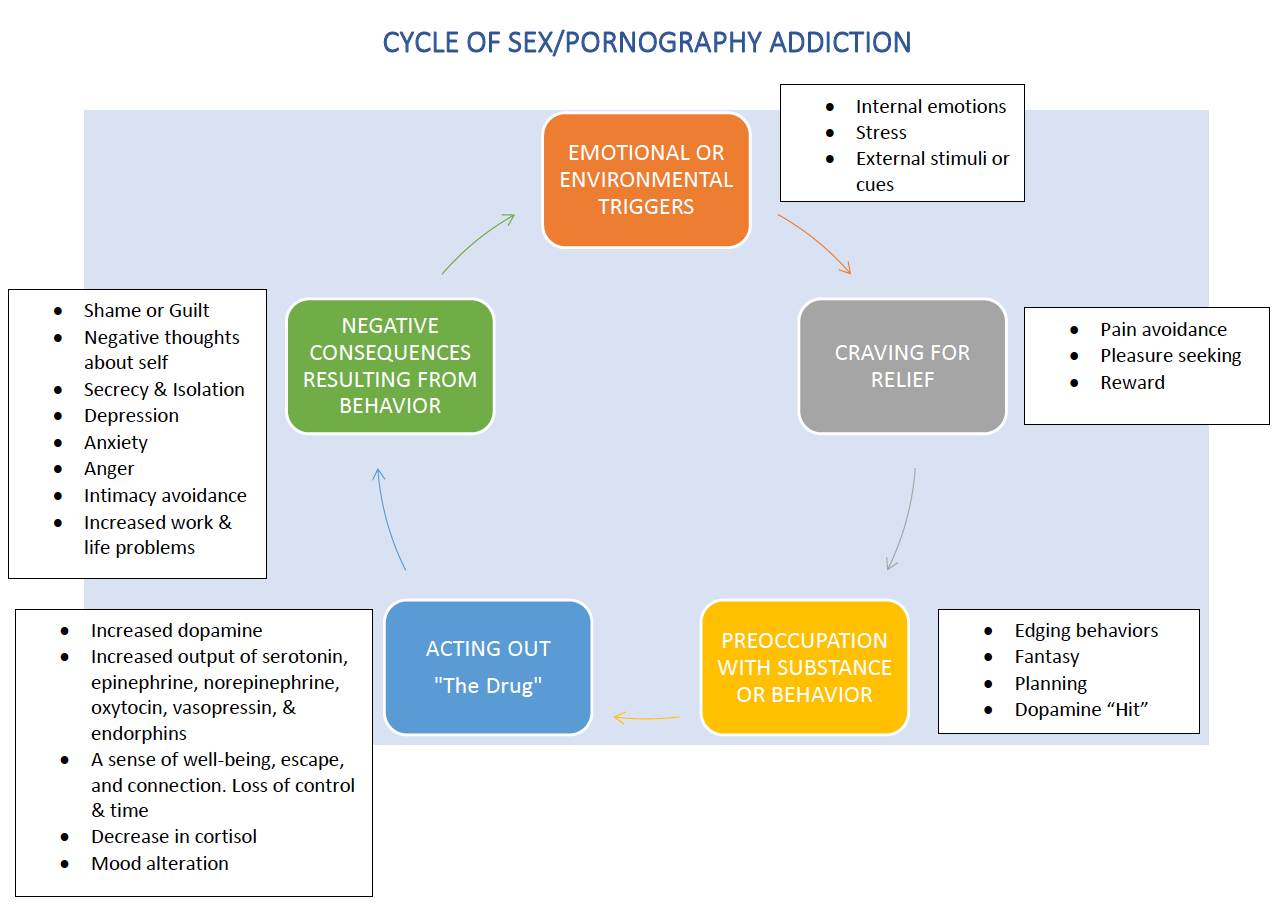The Noose of Pornography Addiction
Do you ever feel you’ve lost the ability to stop a behavior you don’t want? How can something so pleasurable become so painful at the same time? This is a human conundrum and advances in neuroscience have revealed the answers. Like substance addictions, process or behavioral addictions act in very similar ways. The word “addiction” is often interchanged with the word “compulsion”, although there are some differences. Despite their definitions addiction has a clear pattern of behaviors, thoughts, and emotions; one being that most efforts to stop the behavior by the individual does not work, or at least, does not last.
Many who come into therapy to finally deal with this reality are usually facing some type of life crisis and burdened with shame, fear, and confusion. To help understand the “why” of the addiction, which is also a very complex learning, I begin with teaching the cycle of addiction, which normalizes and identifies the out-of-control compulsive behaviors that keep repeating, even with the best intentions of stopping.
All human beings filter through a barrage of incoming stimuli inside themselves, like emotions, pain, and thoughts, as well as external stimuli from smells, sound, touch, sight, and hearing. In the addicted brain, any of these are considered triggers, and can become associated with sexual arousal, and the desire to escape painful discomfort craving relief. Moving closer to relief through pleasure the addicted brain engages in preoccupation of the behaviors that brings the pleasure through peripheral means, such as “edging” (discussed in an upcoming article), sexual fantasizing, and planning the next rendezvous with pornographic material. The percolation of dopamine, the brain’s natural chemical for receiving a pleasurable reward in the future, begins to circulate throughout the body, ultimately leading to the primary acting out behaviors. It is within the actual acting out and euphoric pleasure through sexual orgasm that a cascade of other brain and body chemicals flood the reward/pleasure centers of the brain and nervous system. Perhaps minutes, hours, and even days afterwards negative consequences are experienced such as shame, extreme guilt, self-loathing, anxiety, depression, and isolation. Despite these negative consequences the addicted brain must find a way to alleviate them, because they also are part of the triggers that initiated the cycle in the first place. In essence, the compulsion reinforces the addiction and leads to its perpetuation. This tends to leave the addicted brain feeling powerless, hopeless, and vulnerable. The harder the individual tries to get out of the noose, the tighter it becomes.
However, there is hope, as sexual compulsivity and addiction can be treated. It is a personal decision that requires courage, commitment, and hard work, but it is possible to break the noose of pornography addiction once and for all. Don’t wait another day of suffering and reach out to me today and let me know how I can help.


